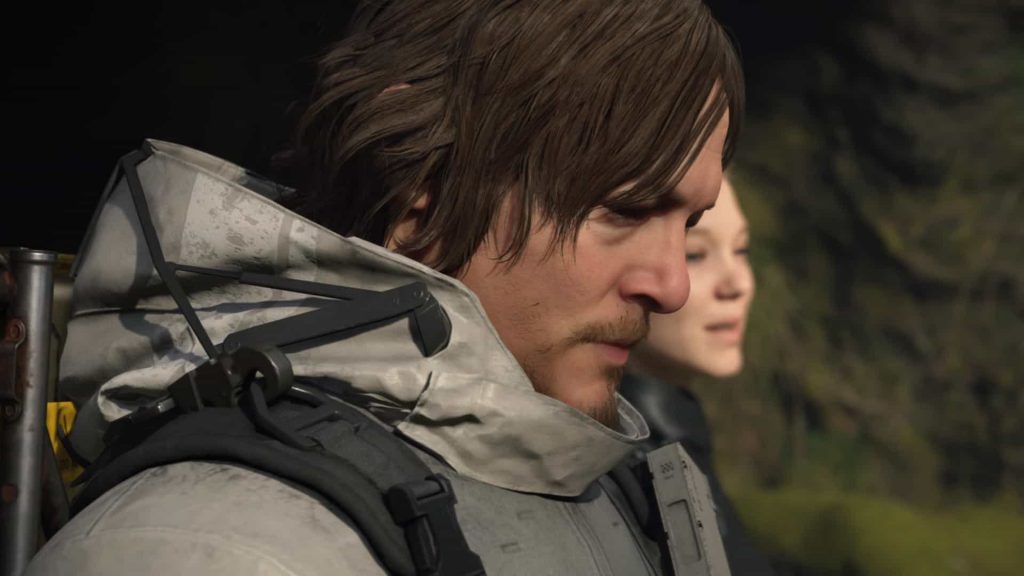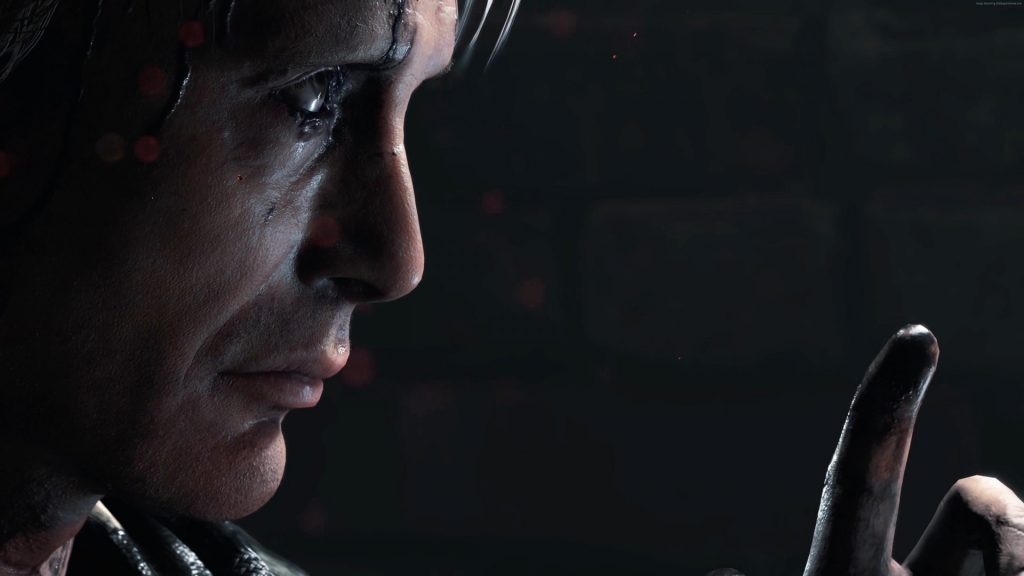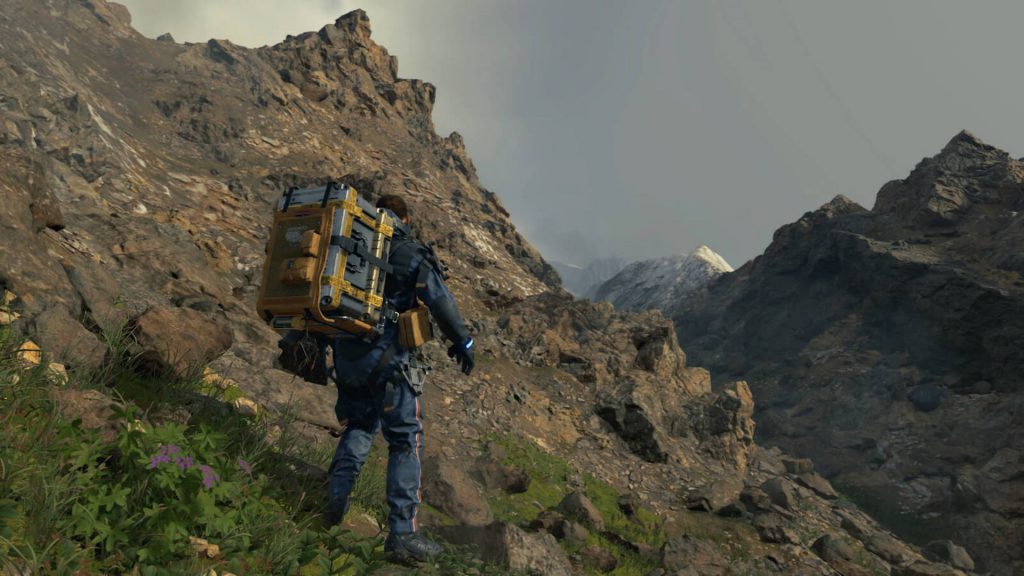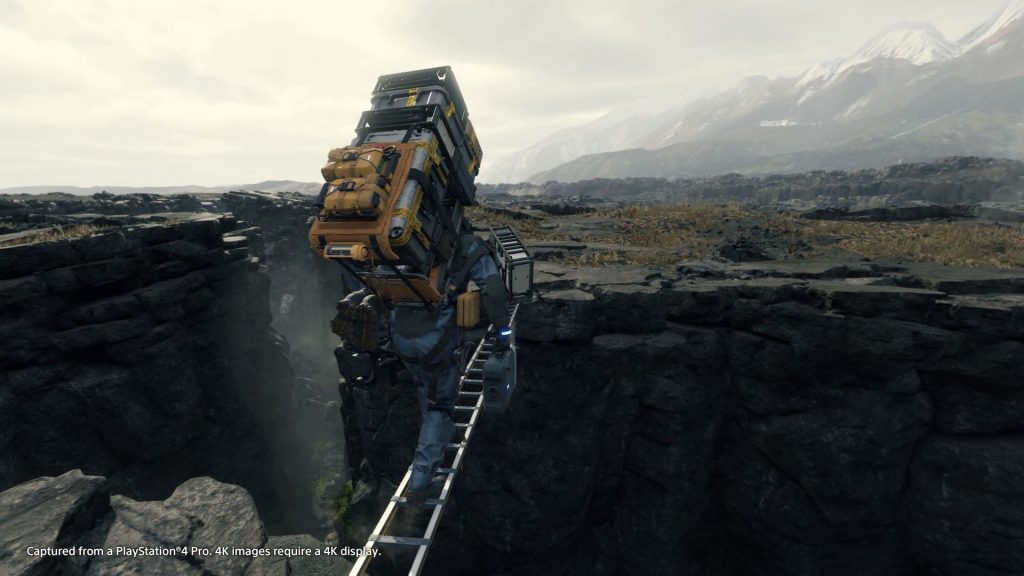What Made Death Stranding 1 One Hell of A Game?
Death Stranding is the most Kojima game yet, but is it truly deserving of its acclaim from a gameplay perspective? Putting aside all the Monster Energy memes and Kojima hype, Death Stranding still stands out as a testament to innovative game design and genre redefinition. It’s a walking sim, but it’s so much more than that. It features a freely explorable open-world, but it’s unlike any other open-world on the market. It’s got a laundry list of top-tier acting talent and oodles of product placement, yet it somehow doesn’t feel contrived or monetarily motivated. Death Stranding is an enigma of a game, a weird thing to be marveled just as much as it is to be appreciated as a game.
For one, it invented a sub-genre appropriately called a ‘strand-game’. For the longest time, I didn’t understand what separated Kojima’s strand-game classification from the asynchronous message system used in Dark Souls. And while Death Stranding certainly uses the idea of Dark Souls’ message system, it builds upon it by substituting helpful hints for actual in-game items. These items, from ropes to ladders, etc., can help other players traverse the harsh conditions of the environment to reach their delivery destination with less of a hassle. But the multiplayer component isn’t the only aspect that defines Kojima’s strand-game; it’s also the distinct theming.

The plot is absolutely bonkers and any attempt to summarize it will be for naught. So, let’s just explore it’s themes and basic concept. As a courier, Sam Bridges delivers various goods to the isolated peoples of a post-apocalyptic America. Merely stepping outside is a life-threatening venture, thanks to the deadly Timefall rain and such, so Sam functions as a lifeline for the citizenry of the splintered Knot Colonies. In true Kojima fashion, every single thing in the game is a metaphor for the game’s theming. But thankfully, that theming is put to good use with clever gameplay-story integration.
And of course, how can one discuss the story of Death Stranding without mentioning its star-studded cast of characters? If this were a Hollywood-filled game by any other director, the casting might seem almost contrived or gimmicky, but Kojima is able to wrangle out a trademark quality of his through these characters: most notably, the weird factor. And I don’t mean a cartoony wackiness when I say that, but rather how uncanny and alien, yet still totally within their element, they all are. The phenomenal acting performances of Death Stranding’s characters makes the entire world all that much more believable and immersive despite how surreal and strange it is. Léa Seydoux as Fragile casually eats a bug and rambles on about Timefall and Beached Things as if it’s just another Tuesday.

Norman Reedus adds a layer of believability with his grounded tone and weathered everyman demeanor – attributes which fits Sam Porter Bridges’ role as a freelance courier perfectly. I mean, sure, not every carrier has to deal with the horrific threat of BTs and military grade cargo thieves on their route, but many gamers can relate to a guy delivering stuff. If the characters felt fake or artificial, the rest of Death Stranding’s world would’ve lost that extra bit of realization and believability. It’s hard to overstate just how ‘in-their-element’ every character is in the game, despite the elements being so…Kojima – that is to say charmingly bizarre. For once, Hollywood talent in a video game doesn’t feel like a novelty add-on to a core experience, but a crucial ingredient to the experience itself.
That signature Kojima tone transfers beautifully to Death Stranding’s worldbuilding and atmosphere. As the second Kojima game to feature full open-world exploration, Death Stranding really sinks its hooks into players looking for an immersive, lived-in environment. The setting is distinctly post-apocalyptic, yes, but the grey skies and rolling hills portray a sensation of tranquility. It’s easy to get transfixed by the environment en route to a delivery destination, especially with the appropriately atmospheric music provided by Low Roar and Silent Poets. Usually, I’m not all that keen on games using licensed music from popular bands, but in this case, it’s all used so brilliantly to fit the scenes without feeling out of place. Count on Kojima to inject Hollywood acting and licensed music into a game and make it work as seamlessly and organically as if it were always meant to be there.

But the world of Death Stranding isn’t just pretty to look at and nice on the ears, it’s also one of the few open-world games that uses its terrain as an end itself rather than a means to an end. That sounds rather backwards considering its reputation as a ‘delivery simulator’, but the core gameplay lies in overcoming the terrain within the open-world and not in the points of interest dotting it. All the so-called ‘anti-fun’ mechanics inherent in the weight of packages and stability management help make the gameplay primarily about the environment itself. In Death Stranding, you don’t just use the environment to get from A to B, you actively engage with it and fight it. Players even have to think about logistics in a unique way. Do you know you’re delivering in MULE territory? Better make room for an assault rifle or Maser Gun as well as some grenades for extra measure. Going into a craggy mountainous region? Probably best to set aside the military grade weaponry for some ladders and ropes. The environment functions as a character in the game rather than just a pretty background, which is something I wish more games would lean into.
What’s more, the game controls well too. Balancing your cargo is accomplished by tilting Sam’s weight with the shoulder triggers. With the Director’s Cut on PS5, this includes enhanced HD rumble and haptic feedback. You really feel the weight and nuances of Sam’s stability with the controller feedback, and it remains one of the best applications for haptic feedback and trigger resistance across the PS5 library. The shooting mechanics aren’t the best in the third-person shooting genre, of course, but they do the job for the limited times the game demands you to engage with them. Death Stranding prides itself on its traversal mechanics rather than combatitive gameplay, which really helps make the open-world feel that much more enjoyable to explore and interact with.

Another way the open-world feels special is how the game’s ‘multiplayer’ works within it. Calling it multiplayer is a tad strong, since it’s an asynchronous cooperative experience and not simultaneous interaction. But one has to appreciate the adherence the co-op has to the game’s core theme of connection. It represents an attempt to connect what is disconnected. Using the Portable Chiral Constructor, players can construct various tools such as bridges and power generators to leave for other players who encounter that area of the map in their instance in the game. There’s no reward for leaving behind helpful tools or completing another player’s delivery, well, unless you count ‘likes’ as a reward. Helping other players out is a cool way to feel more connected to others through altruism, and it’s a nice parallel to what the game’s themes are.
The game’s mechanics aren’t for everyone. But that goes for most things in Death Stranding. The true mark of uniqueness and vision is that it’s not for everyone, and that’s okay, as long as it’s still good. Death Stranding is Kojima’s most personal and unfiltered game yet and we can’t wait to see what the sequel has in store for us.
Note: The views expressed in this article are those of the author and do not necessarily represent the views of, and should not be attributed to, GamingBolt as an organization.


Comments are closed.